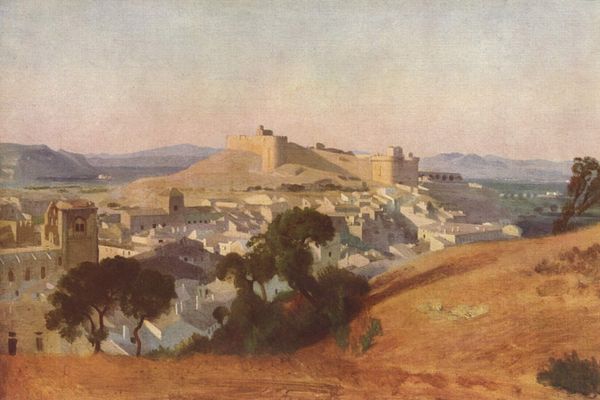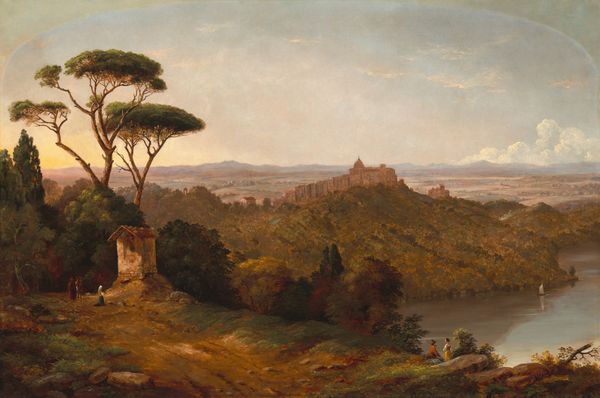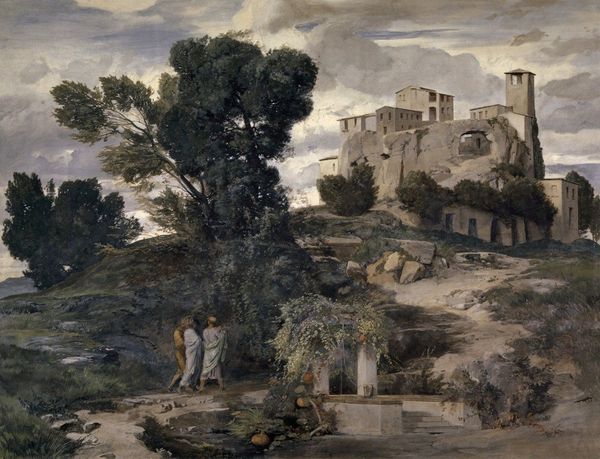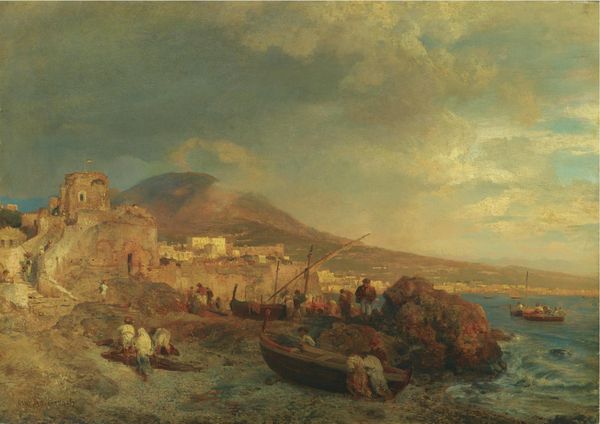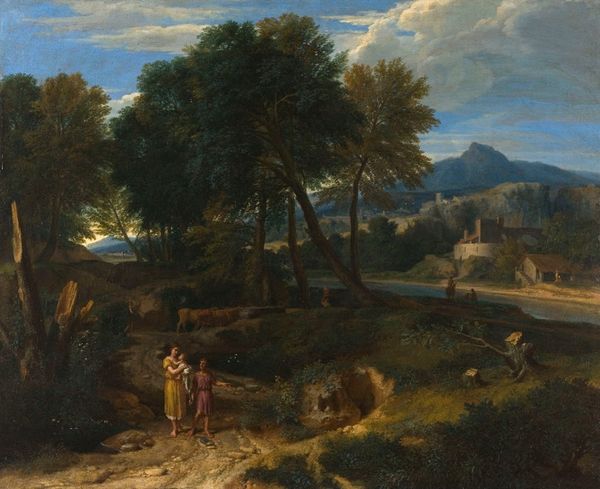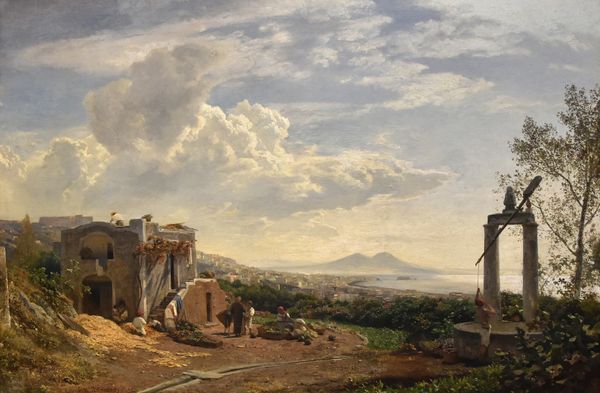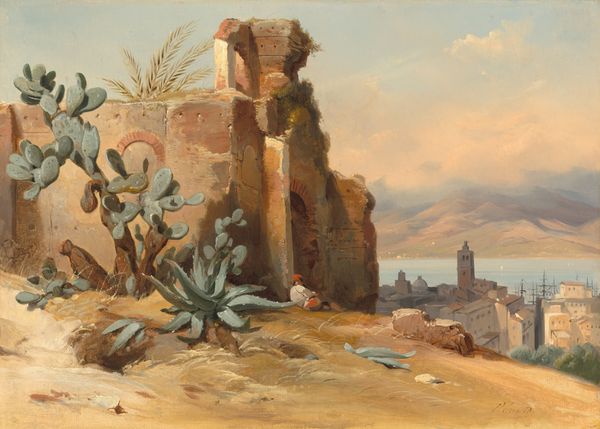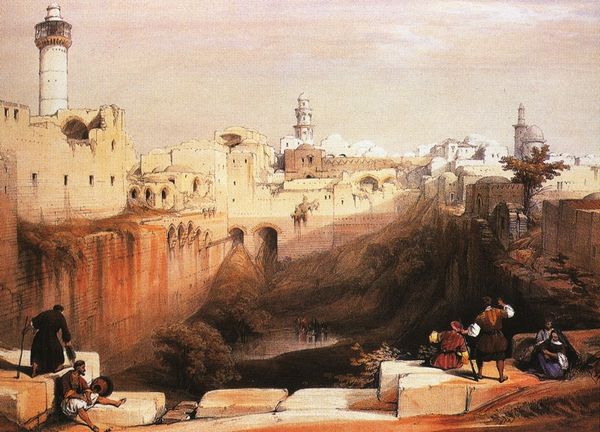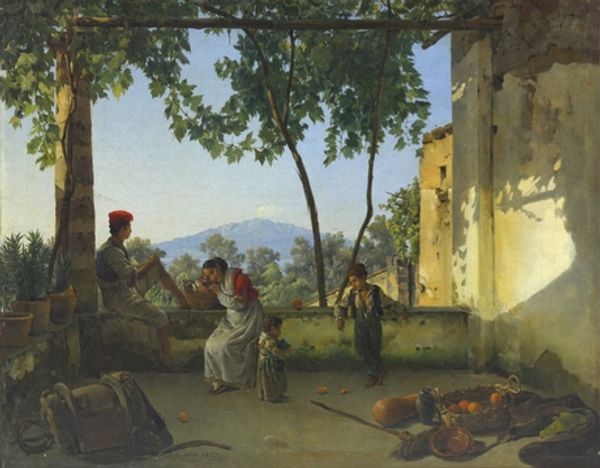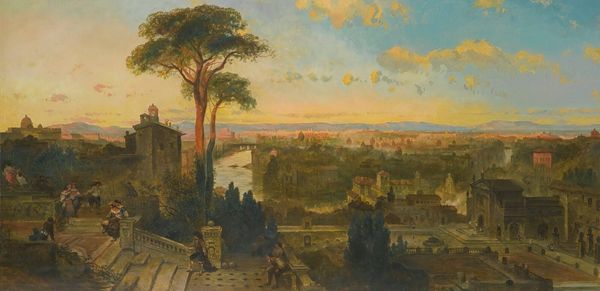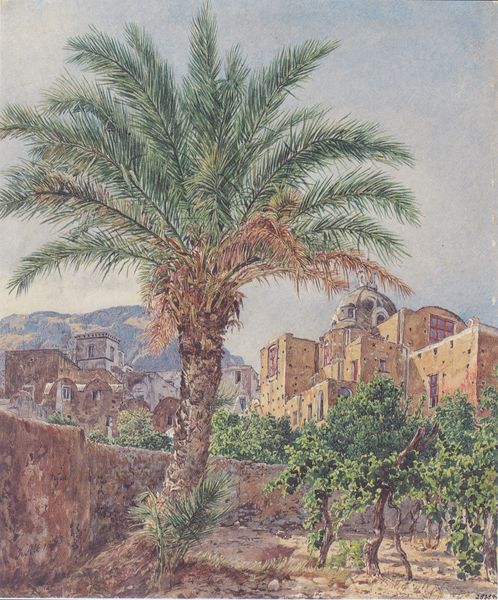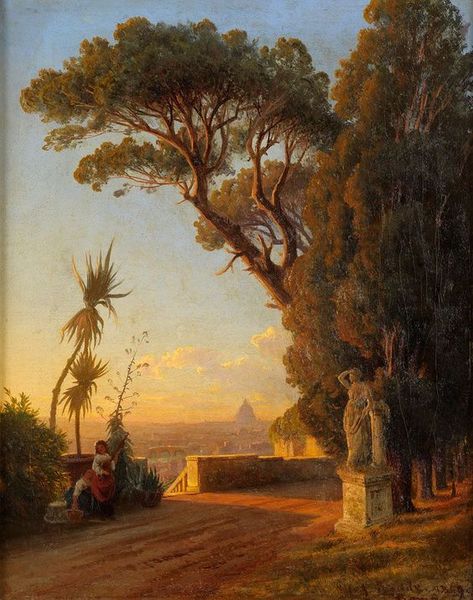
Dimensions: support: 514 x 822 mm frame: 655 x 965 x 67 mm
Copyright: CC-BY-NC-ND 4.0 DEED, Photo: Tate
Curator: Edward Lear gives us a stunning vista in his work, "View of Reggio and the Straits of Messina," held at Tate Britain. Editor: The overall impression is quite romantic, isn't it? That diffused light and layering of landscape. Curator: Yes, consider how the formal composition leads your eye—the plant in the foreground, the group of figures, and then the city itself against the backdrop of mountains. Editor: I'm particularly interested in Lear's choice to include those local women in the foreground. What can you tell us about the social context of this landscape? Curator: It's suggestive of travel and colonialism, this gaze upon the landscape mediated by local inhabitants, rendered with a sense of picturesque detail. Editor: True. By positioning those figures so prominently, Lear seems to acknowledge, perhaps unconsciously, the human element within this vast scene. Food for thought, certainly.
Comments
tatebritain 8 months ago
⋮
http://www.tate.org.uk/art/artworks/lear-view-of-reggio-and-the-straits-of-messina-t00630
Join the conversation
Join millions of artists and users on Artera today and experience the ultimate creative platform.
tatebritain 8 months ago
⋮
Edward Lear is famous for his nonsense poems but he was also a botanical and zoological illustrator and travel artist. This view of the city of Reggio Calabria in Southern Italy, looking across the water to Sicily and Mount Etna, was a well-known tourist site. Etna is famous for its frequent volcanic eruptions but Lear chose to show it at peace. He made on-the-spot studies of details including the cactus and aloe plants in 1847, and created the finished painting in London, several years later. Gallery label, January 2025
